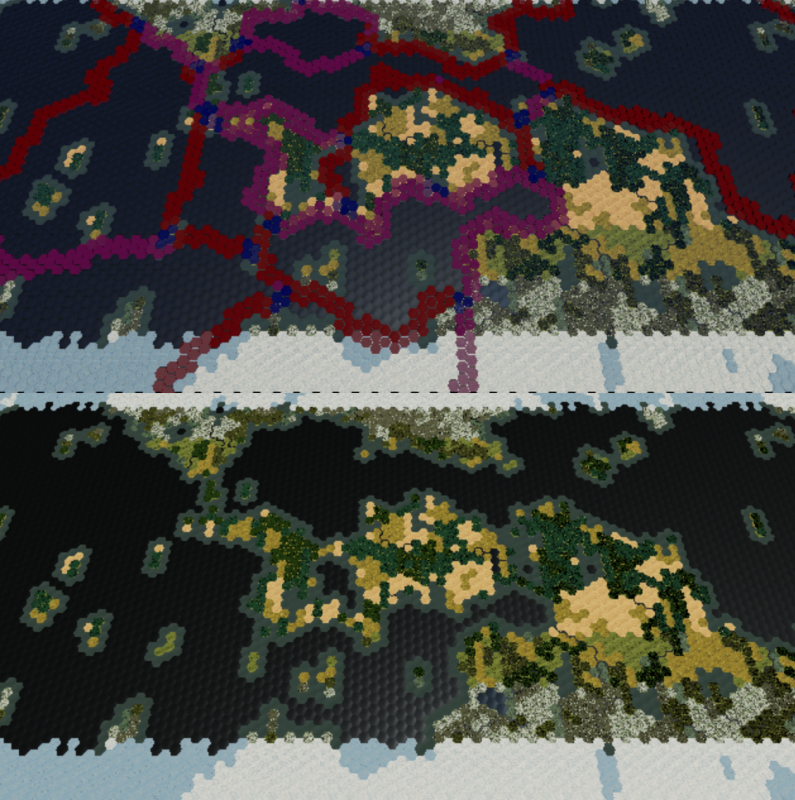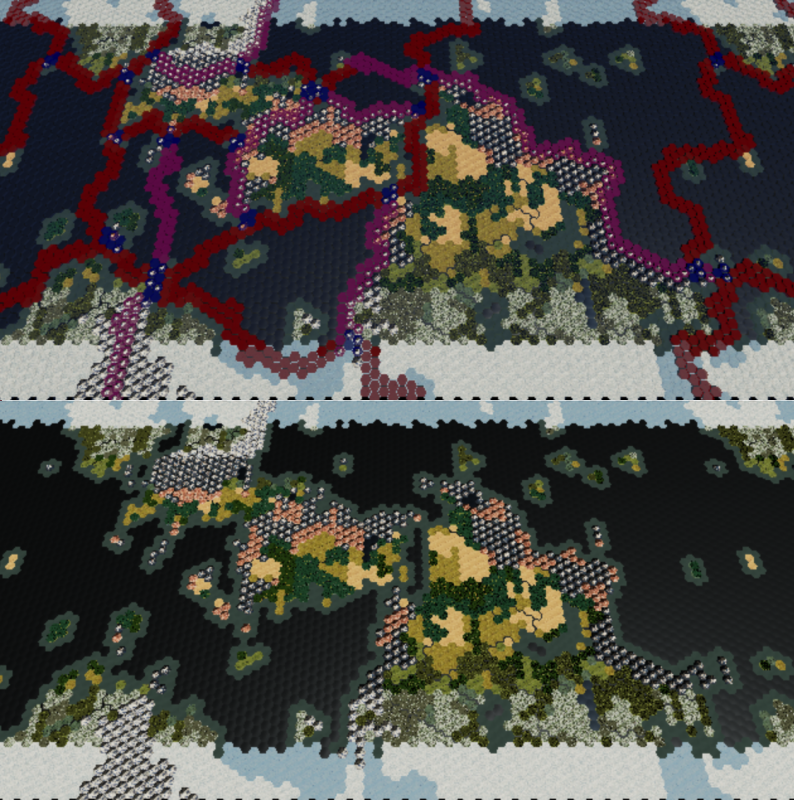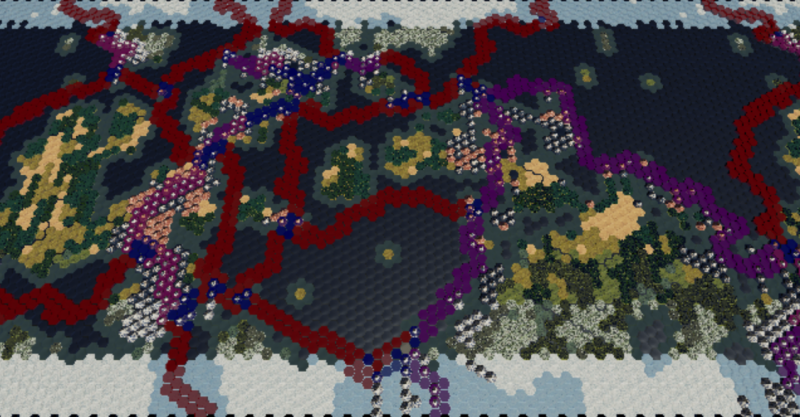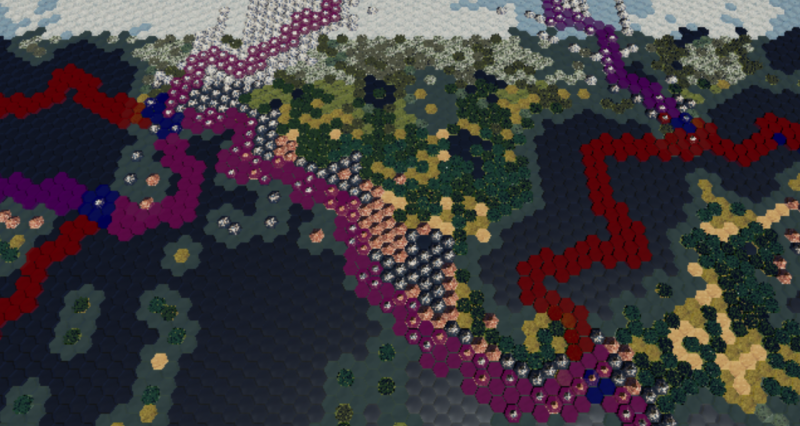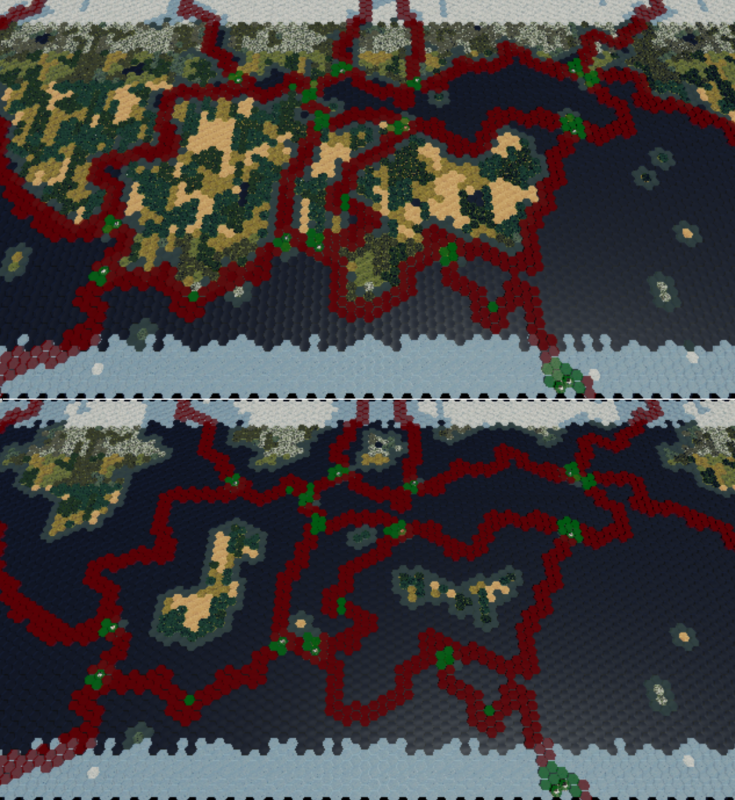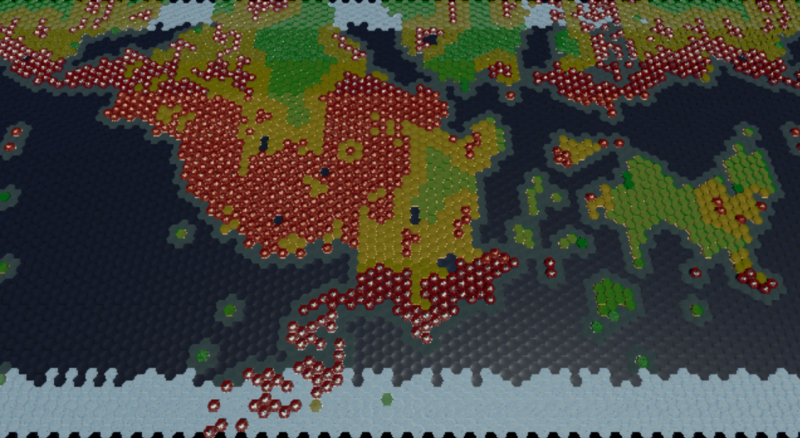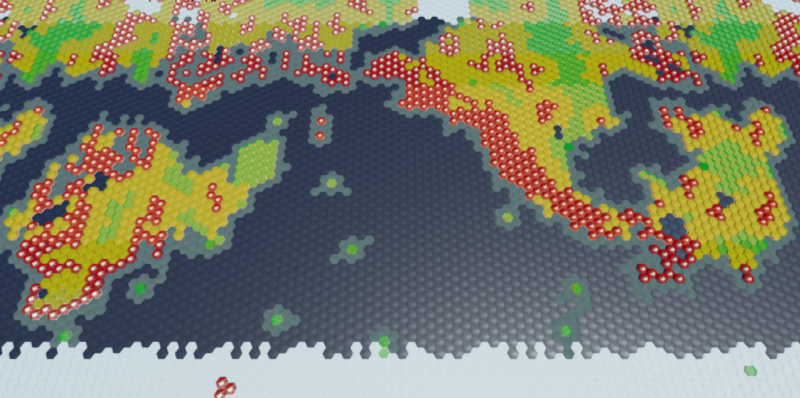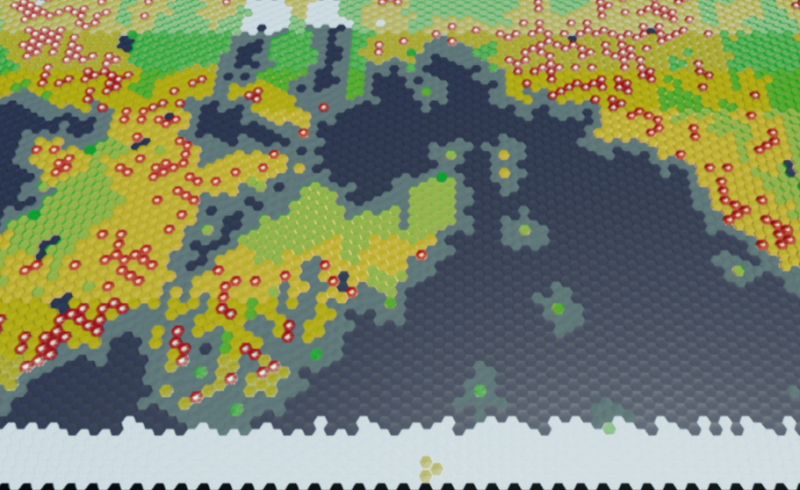Love it when I immediately know the solution to a problem within 5 minutes of opening the editor.  Very empowering!
Very empowering!
Again, Red is divergent which means water seeds spawn on both sides of the rift, and purple is convergent which means land spawns on continental side and water spawns on the ocean side. The blue as transform can spawn either water or land, 50/50.
Notice the nice little land bridge that formed between the middle continent and the small mid-western continent. That kind of spontaneous isthmus formation is one of the things I was hoping to see between adjacent continents using this system. Well really in this case there were 2 land bridges forming that Sea, but that works too. 
If you study a few of the other recently posted maps, you can see that they are all using the same tectonic, continental, and ocean seeds, so the only difference in this latest generation comes from the seeds that are spawning along the varying tectonic plate boundary types.
I am not sure how much more tweaking I will do to this current setup right now, other than perhaps reducing boundary seeds from 100% per tile to something player controlled. Also one minor bug I need to track down and squash but that shouldn’t take too long.
I may go with it for a while and keep an eye out for oddities while moving on to the mountain portion of the boundary seeding which will put mountain seeds along every convergent boundary. I feel like that should work pretty well on the first pass, but there may be cases where I need to extend the reach of those mountain ranges into a continent if I don’t see enough penetration beyond the coastlines. Then I will seed a few smaller mountain ranges around the map to resemble ancient tectonic activity. Then I will form hills around all the mountain ranges. Following that I will work on an erosion system that grinds some of the edge off the mountain ranges, especially on the coast for terrain resembling california, japan, korea, etc.
